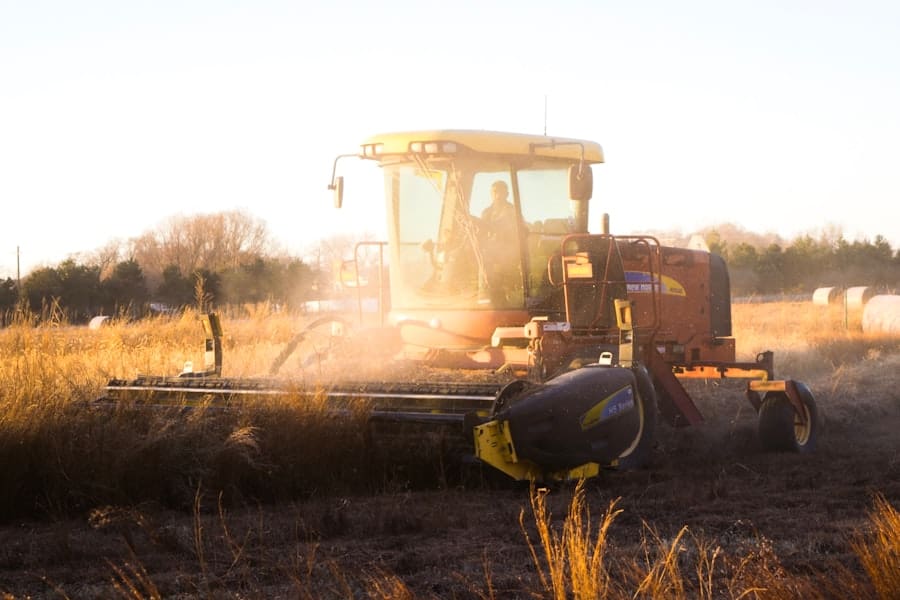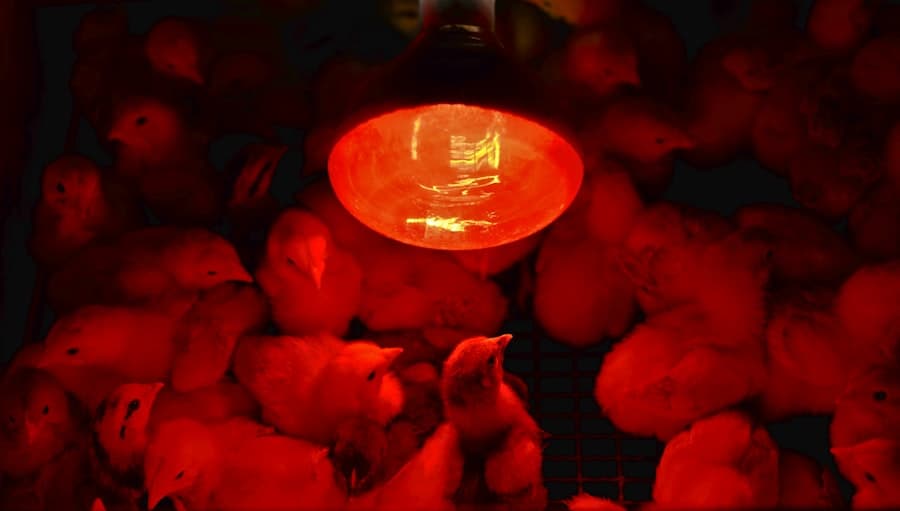Vertical farming represents a transformative approach to agriculture, particularly in urban settings where space is at a premium. This innovative method involves cultivating crops in vertically stacked layers, often integrated into structures such as skyscrapers, repurposed warehouses, or shipping containers. The concept is not merely about maximizing space; it also encompasses advanced agricultural techniques that leverage technology to enhance productivity and sustainability.
As the global population continues to rise, with projections suggesting that it could reach nearly 10 billion by 2050, the demand for food will increase significantly. Traditional farming methods may struggle to meet this demand, especially in densely populated urban areas where arable land is limited. The rise of vertical farming is a response to these challenges, offering a solution that combines efficiency with sustainability.
This method not only ensures a consistent supply of fresh produce but also reduces the carbon footprint associated with transporting food over long distances. As cities expand and the need for innovative agricultural solutions becomes more pressing, vertical farming stands out as a viable alternative that aligns with modern urban lifestyles and environmental goals.
Key Takeaways
- Vertical farming is a method of growing crops in vertically stacked layers, often in controlled environments like warehouses or skyscrapers, using advanced technologies.
- Technologies and innovations in vertical farming include hydroponics, aeroponics, and aquaponics, as well as the use of LED lighting, automation, and data analytics to optimize plant growth.
- Vertical farming addresses urban food security by bringing food production closer to urban centers, reducing transportation costs and food miles, and providing fresh produce year-round.
- Environmental benefits of vertical farming include reduced water usage, minimal pesticide and herbicide use, and the potential for carbon sequestration in urban areas.
- The economic impact of vertical farming in urban areas includes job creation, local food production, and the potential for revitalizing underutilized urban spaces.
Vertical Farming Technologies and Innovations
The technological advancements driving vertical farming are diverse and multifaceted, encompassing hydroponics, aeroponics, and aquaponics, among other systems. Hydroponics, for instance, involves growing plants in nutrient-rich water solutions without soil, allowing for precise control over nutrient delivery and water usage. This method can lead to faster growth rates and higher yields compared to traditional soil-based agriculture.
Aeroponics takes this a step further by suspending plants in air and misting their roots with nutrient solutions, which can further enhance growth efficiency and reduce water consumption. In addition to these growing techniques, vertical farms often employ sophisticated climate control systems that regulate temperature, humidity, and light. LED lighting technology has revolutionized the way plants are grown indoors, providing tailored light spectrums that optimize photosynthesis while minimizing energy consumption.
Furthermore, automation and artificial intelligence play crucial roles in monitoring plant health and optimizing growth conditions. Sensors can track variables such as moisture levels and nutrient concentrations, allowing for real-time adjustments that enhance productivity. These innovations not only improve crop yields but also contribute to the overall sustainability of the farming process.
Addressing Urban Food Security

Urban food security is a pressing issue as cities grapple with the challenges of feeding their growing populations. Traditional supply chains often struggle to deliver fresh produce efficiently, leading to food deserts where access to nutritious food is limited. Vertical farming offers a solution by bringing food production closer to consumers.
By situating farms within urban environments, fresh produce can be harvested and delivered within hours, significantly reducing the time from farm to table. This immediacy not only enhances the quality of the food but also fosters a sense of community around local food systems. Moreover, vertical farms can be designed to cater specifically to the needs of urban populations.
For instance, they can focus on growing high-demand crops such as leafy greens, herbs, and microgreens that are often more expensive and less accessible in urban markets. By producing these crops locally, vertical farms can help stabilize prices and ensure that residents have access to fresh, healthy options. Additionally, these farms can serve as educational hubs, teaching urban dwellers about sustainable practices and nutrition while promoting a culture of local food production.
Environmental Benefits of Vertical Farming
The environmental advantages of vertical farming are significant and multifaceted. One of the most notable benefits is the reduction in land use. Traditional agriculture requires vast expanses of land, often leading to deforestation and habitat destruction.
In contrast, vertical farming utilizes significantly less land by stacking layers of crops vertically. This efficient use of space allows for food production without encroaching on natural ecosystems. Water conservation is another critical environmental benefit associated with vertical farming.
Conventional agriculture is notorious for its high water consumption, often leading to depletion of local water resources. Vertical farms utilize advanced irrigation techniques that can reduce water usage by up to 90% compared to traditional methods. Hydroponic systems recirculate water, ensuring that it is used efficiently and minimizing waste.
Additionally, because vertical farms are typically located in urban areas, they can utilize rainwater harvesting systems to further enhance their sustainability.
Economic Impact of Vertical Farming in Urban Areas
The economic implications of vertical farming extend beyond mere food production; they encompass job creation, local economic development, and innovation in agricultural practices. As vertical farms proliferate in urban areas, they generate employment opportunities across various sectors—from farm management and operations to research and development roles focused on improving agricultural technologies. This job creation can be particularly beneficial in cities with high unemployment rates or limited access to traditional agricultural jobs.
Furthermore, vertical farming can stimulate local economies by reducing reliance on imported produce. By producing food locally, cities can keep more money within their communities while also supporting local businesses involved in distribution and retail. The establishment of vertical farms can also attract investment in related sectors such as technology development and sustainable practices.
As cities recognize the potential economic benefits of vertical farming, they may implement policies that support its growth through incentives or grants aimed at fostering innovation in urban agriculture.
Challenges and Limitations of Vertical Farming

Despite its many advantages, vertical farming faces several challenges that must be addressed for it to reach its full potential. One significant hurdle is the high initial capital investment required to establish these farms. The costs associated with building infrastructure, purchasing advanced technology, and maintaining climate control systems can be substantial.
For many entrepreneurs or small-scale farmers looking to enter this market, securing funding can be a daunting task. Additionally, while vertical farming can produce high yields in controlled environments, it may not be suitable for all types of crops. Certain staple crops like grains or root vegetables may not thrive in vertical systems due to their specific growth requirements or space needs.
This limitation necessitates a careful selection of crops that are best suited for vertical farming environments, which may restrict the diversity of produce available to consumers. Furthermore, the reliance on technology raises concerns about vulnerability to system failures or cyber threats that could disrupt operations.
Vertical Farming and Sustainable Urban Development
Vertical farming aligns closely with the principles of sustainable urban development by promoting efficient land use and reducing environmental impact. As cities continue to grow and face challenges related to climate change and resource scarcity, integrating vertical farms into urban planning can contribute significantly to sustainability goals. These farms can be incorporated into existing buildings or new developments, transforming underutilized spaces into productive agricultural sites.
Moreover, vertical farming supports the concept of circular economies within urban environments. By utilizing waste products from other industries—such as organic waste for composting or excess heat from buildings for climate control—vertical farms can minimize waste while maximizing resource efficiency. This integration fosters a holistic approach to urban development where food production becomes an integral part of the city’s ecosystem rather than an isolated activity.
Future Prospects of Vertical Farming in Urban Food Production
Looking ahead, the future prospects for vertical farming in urban food production appear promising as technological advancements continue to evolve and public interest in sustainable practices grows. Innovations such as blockchain technology could enhance transparency in food supply chains, allowing consumers to trace the origins of their food while ensuring quality control throughout the production process. Additionally, advancements in genetic engineering may lead to the development of crop varieties specifically optimized for vertical farming environments.
As cities increasingly recognize the importance of local food systems in addressing food security and environmental challenges, policies supporting vertical farming initiatives are likely to gain traction. Governments may provide incentives for urban agriculture projects or invest in research aimed at improving vertical farming technologies. The integration of vertical farms into urban landscapes could become a defining feature of future cities—transforming rooftops into green spaces that not only provide fresh produce but also enhance biodiversity and improve air quality.
In conclusion, vertical farming stands at the intersection of innovation and necessity within urban environments. As cities continue to evolve in response to population growth and environmental challenges, this method of agriculture offers a sustainable solution that addresses food security while promoting economic development and environmental stewardship. The ongoing advancements in technology and growing public awareness will likely propel vertical farming into a central role in the future of urban food production.
Vertical farming has been gaining traction as a solution to urban food challenges, with innovations constantly being developed to improve efficiency and sustainability. One related article that delves into the world of technology and innovation is Exploring the Features of the Samsung Notebook 9 Pro. This article discusses the cutting-edge features of the Samsung Notebook 9 Pro, showcasing how technology continues to push boundaries and revolutionize various industries. Just as vertical farming is revolutionizing the way we grow food in urban environments, technology like the Samsung Notebook 9 Pro is reshaping the landscape of computing and productivity.
FAQs
What is vertical farming?
Vertical farming is the practice of growing crops in vertically stacked layers, often in controlled environments such as warehouses or skyscrapers. This method utilizes indoor farming techniques and can incorporate hydroponic, aeroponic, or aquaponic systems.
How does vertical farming address urban food challenges?
Vertical farming addresses urban food challenges by producing food in close proximity to urban centers, reducing the need for long-distance transportation and minimizing the environmental impact of food production. It also allows for year-round production, making fresh produce more readily available in urban areas.
What are some innovations in vertical farming?
Innovations in vertical farming include the use of LED lighting to optimize plant growth, automation and robotics for efficient crop management, and the development of specialized growing mediums to improve plant health and yield. Additionally, advancements in vertical farming technology have led to the creation of modular and scalable farming systems.
What are the benefits of vertical farming?
Some benefits of vertical farming include increased food security in urban areas, reduced water usage compared to traditional farming methods, and the ability to grow crops in locations where arable land is limited. Vertical farming also has the potential to reduce the carbon footprint of food production by minimizing transportation and energy usage.
What are the challenges of vertical farming?
Challenges of vertical farming include high initial investment costs for infrastructure and technology, as well as the need for specialized knowledge and skills to operate and maintain vertical farming systems. Additionally, energy consumption and the environmental impact of manufacturing the necessary equipment are considerations for the sustainability of vertical farming.

